Review: Motorola Moto X Pure Edition
Lock Screen
Motorola offers one of the most useful lock screens available to Android handsets. There are three basic settings. Moto Display shows important notifications as simple, interactive icons on the lock screen. Ambient Display wakes the screen regularly with a list of the current notifications in a more detailed way. Last, users can choose to leave the screen dark at all times.
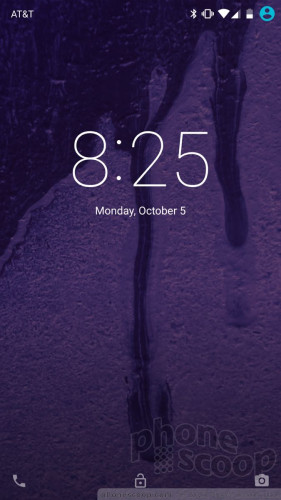
The big difference between Moto Display and Ambient Display is what you see on the lock screen. With Moto Display enabled, you'll see the Gmail logo when a new Gmail arrives, or the SMS logo when a new text arrives. That's all. With Ambient Display, you'll see the exact number of Gmails or text messages you have, and who the most recent one is from. Whichever you choose, the notifications arrive and repeat once and then go away. The clock is displayed whenever notifications arrive. The Moto X is smart enough to keep the screen dark when it senses that the phone is in your pocket or purse, or face down.
The Moto X Pure Edition includes motion detectors, and you can wake the screen by waving your hand over the display. My kids love this feature. A quick pass of your hand over the screen will turn it on so you can see the time and your notifications. Neat. I found the threshold to be about 18 inches; in other words, the Moto X won't wake if you wave at it frantically from across the room.
The Moto X Pure Edition will also wake at the sound of your voice. You have to train the phone with a catchphrase (“Hello, Moto X”, for example), but after that quick process, the phone will turn on and obey your commands when you talk to it. For example, you can make requests to read incoming messages, send replies, and so on.
If you simply press the screen lock button (how quaint!), the display wakes fully to show the clock, wallpaper, and notifications listed below the clock. There are shortcuts to the phone and camera available on this screen.
There's no better phone for handling notifications.
Home Screens
The Moto X ships with a mostly standard version of Android 5.1 Lollipop. Owners of the phone can customize the typical stuff, such as wallpapers, widgets, and so on. The home screen and notification shade behave as expected for a Lollipop device.
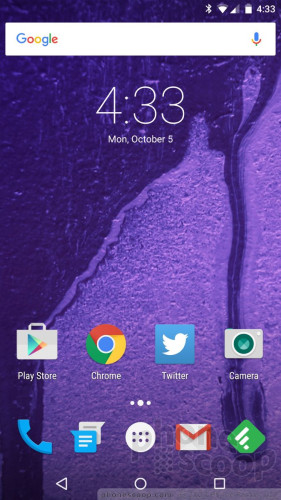
The biggest change I found was in the app drawer. The Moto X Pure Edition populates the top of the app drawer with the four apps you've used most recently. There's no way to adjust this function or turn it off, that I could find. Further, the app drawer is organized vertically instead of horizontally (you swipe up and down rather than side-to-side).
Another major benefit of the Moto X home screen comes from the Moto application. The Moto app bundles together a handful of functions that used to live in separate apps. Moto app controls Ambient Display / Moto Display. It also manages the Moto Assist function, which is used for changing Do Not Disturb settings based on location and calendar. Last, it can handle some gesture-based controls. For example, a quick turn of the wrist will launch the camera, and a quick shake of the phone will launch the camera and immediately fire off a photo.
Motorola has committed to updating the Moto X Pure Edition to Android 6.0 Marshmallow, though it did not say exactly when the update will show up. When it does, some of Marshmallow's new built-in features will replace Moto Assist.
As for performance, the Moto X uses a 1.8GHz hexa-core Snapdragon 808 processor with 3 GB of RAM. This combination worked very well. Every app on the phone performed smoothly and I didn't experience any hiccups or problems. The phone doesn't feel as fast as the Note 5 or the 6s Plus, but it feels fast enough.
Camera
Love it or hate it, Motorola has developed one of the simplest camera apps for its phones. The Moto X largely carries over the same app we saw earlier this year on the Moto G.
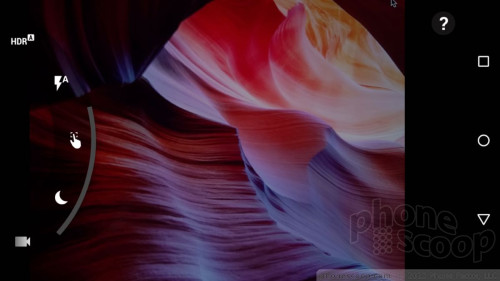
As noted, you can open the camera with gestures. The camera interface, which is spartan at best, provides a tutorial to teach you the basics the first time you use it. There are only two buttons: one for the video camera and another for the user-facing camera. The other controls can only be accessed by swiping from the left side of the viewfinder towards the center.
The settings are arranged in a rotating dial. The Moto X includes HDR, flash, touch-to-focus, night shot, and panorama features — plus some minor settings — all in this single dial. You essentially toggle each feature on or off, or set it to function automatically; that's about it.
The camera has an always-on burst mode. Press the screen and hold, and the X will focus and then capture images continuously until you take your finger off the screen.
Unlike the more powerful camera apps found on LG and Samsung devices, the Moto X does not let users adjust ISO, brightness, or white balance. Nor does the camera include filters or fancy shooting modes. It's a basic shooter, more in line with the features found in Apple's camera app. This may appeal to some and frustrate others.
The camera does function much faster than the camera did on older Motorola smartphones. In fact, I'd say the Moto X Pure Edition has the fastest camera I've seen from Motorola.
Photos/Video
For the third year in a row, Motorola claims the camera in the Moto X is the best it has ever made. I concur, but it's not the best camera on a smartphone.
The Moto X has a 21-megapixel sensor and there's no doubt it performs better than the 13-megapixel shooter on last year's phone. The images are generally sharp (see the stone wall) and have accurate exposure and white balance (see the street photo). Not all the images are perfect, but the majority of them turn out well.
Motorola says low-light shots should be much improved over previous phones, and that's true, too. The bar here wasn't very high, however, as Motorola's older phones had rather poor low-light performance. The Moto X does better in low light, but the LG G4, Samsung Note 5, and iPhone 6s Plus do better.
In 2014 and 2013, I was hesitant to carry the Moto X thanks to the inconsistent camera performance. This year, I'd happily carry around the Moto X Pure Edition and trust it to take care of my everyday photography needs.
The Moto X's selfie cam captures 5-megapixel images and has a wide, 87-degree field of view. I was pleased with the results. Shots taken outdoors looked genuinely good, and the selfie flash definitely helps in low-light environments.

The video camera does a very good job capturing 1080p HD video. (There's rarely a good reason to shoot in 4K.) The phone did a great job with focus, exposure, and white balance. The video footage I captured looked very good when blown up on my monitor. The 720p slo-mo video is fun to shoot in, too, and the quality was solid.
As with the camera, I'd happily use the Moto X for daily video needs.
Bloatware
Motorola is selling the Moto X directly to consumers online. AT&T, Verizon, and other carriers are not selling the Moto X, which is a big blow to Motorola. Without carrier sales channels, consumers have to actively seek out the Moto X on their own. This could prove challenging to Motorola, which has already seen sales decline steadily over the last few years. The Moto X is its flagship product, and it's hard to imagine sales taking off if consumers don't see it side-by-side with competing phones on store shelves.
That said, the Moto X is only pre-loaded with extra apps from Motorola itself. Unlike the manufacturer apps made by Motorola's competitors, its software (Moto Assist, Ambient Display) actually benefits users. There is no bloatware from carriers.
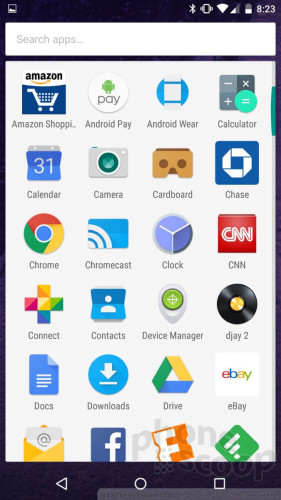


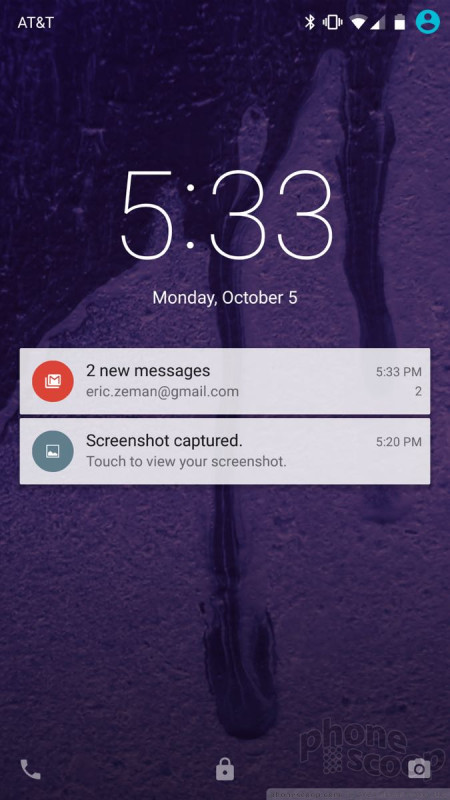




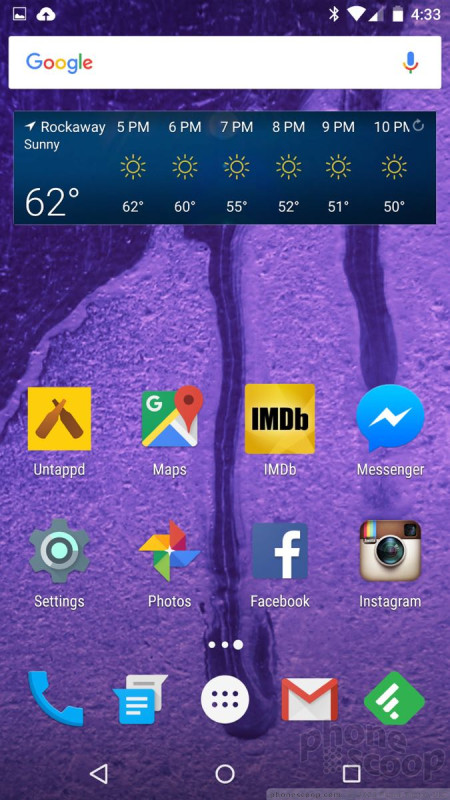






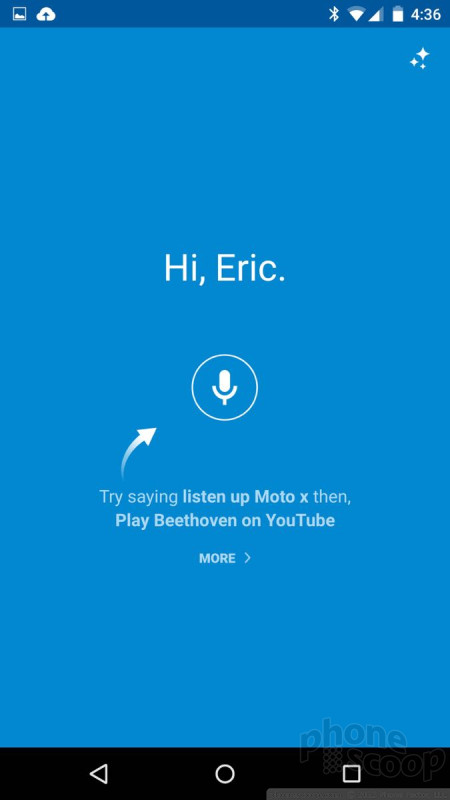






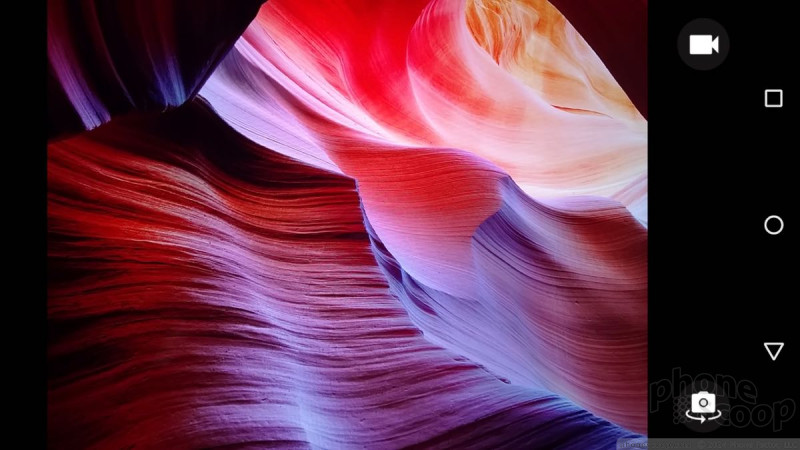


















 Hands On with the Moto X
Hands On with the Moto X
 Liveblog of Motorola 2015 Event
Liveblog of Motorola 2015 Event
 Republic Wireless Improves Android Lineup
Republic Wireless Improves Android Lineup
 Best Buy Selling Moto X Pure Edition
Best Buy Selling Moto X Pure Edition
 Motorola Updates Camera, Gallery Apps
Motorola Updates Camera, Gallery Apps
 Motorola Moto X Pure Edition / Style
Motorola Moto X Pure Edition / Style






